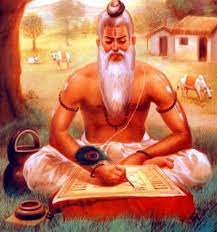


Rishi is a Sanskrit word for an accomplished and enlightened person to whom knowledge is revealed. Rishis or sages who, after intense meditation, realized the supreme truth and eternal knowledge. Maharishi Vishvamitra (महर्षि विश्वामित्र) is considered to be one of the most revered rishis of ancient India. As per the holy Puranas, there have been only 24 Rishis who have understood the Gayatri Mantra. It is believed that Sage Vishvamitra is supposed to be the first and Yajnavalkya the last. He is credited as the author of the majority portion of the Mandala 3 of the Rig-Veda. The name “Vishvamitra” literally means “friend of the world.” He is a famous figure in other Southeast Asian cultures as well, mainly because of his role in Ramayana. He is referred to by Vishwamitra, Viswamitra, Vishvamitra, and Kaushika. Rishi Vishvamitra was not a Brahmana by birth but a valiant warrior. He was a Kshatriya King named Kaushika, as he was a descendant of the Sage Kusha and son of King Gaadhi. Vishvamitra competently ruled the kingdom for many years before he finally gave up everything and went on to become a saint.
The Vishnu Purana and Harivamsha chapter 27 of the Mahabharata describes the birth of this great sage. As per Vishnu Purana, Kaushika married a damsel of the Purukutsa dynasty. In due course of time, they had a son named Gaadhi, who then had a daughter named Satyavati. Satyavati married an old Brahmin named Ruchika. He was the main member of the Bhrigu race. Ruchika wanted a son holding the potential of a Brahmin, and hence, he gave Satyavati a sacrificial offering charu, which he had arranged himself. He then also gave her mother another charu to make her conceive a son with a Kshatriya character. Satyavati’s mother secretly asked her daughter to exchange her charu with her. As a result, Satyavati’s mother gives birth to Vishvamitra, the son of a Kshatriya King Gaadhi. He had all the qualities of a Brahmin, just as Ruchika had desired.


Hinduism is a religion that is alive for thousands of years. It is such a tradition that was born in the Indian subcontinent and shaped the Indian culture. Hinduism is not only a religion but also an integral identity of the majority of Indians.
Read more